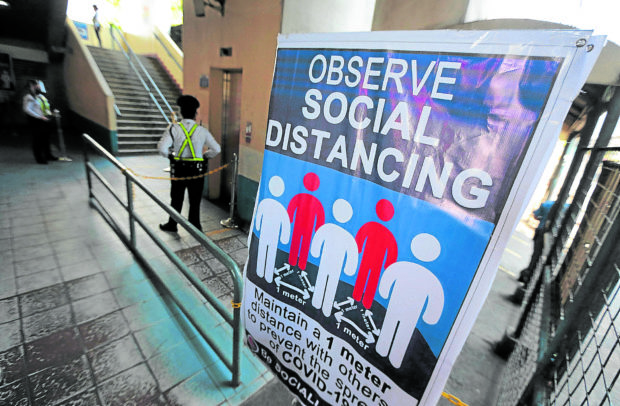Metro Manila mayors see no need yet to raise alert level despite COVID-19 surge
MANILA, Philippines — Despite the alarming surge in COVID-19 cases nationwide, the 17 mayors in Metro Manila still see no need to impose stricter rules to restrict mobility among residents other than the unvaccinated, since the “metrics” in the national capital remained favorable.
In a press conference on Monday, Metropolitan Manila Development Authority (MMDA) Chair Benhur Abalos expressed confidence in the high vaccination rate in the National Capital Region (NCR), which has exceeded its target population as of Jan. 9.
As of Jan. 8, he said, 11,185,801 people—or 114.14 percent of the target adult population in NCR —have already had their first dose, while 10,534,251 or 107.49 percent have had their second dose. Meanwhile, 924,593 booster shots have been administered as well.
Abalos also noted that Metro Manila’s health-care utilization rate (HCUR)—or the proportion of available health services—was still well within the national government’s figures to determine whether an area should be placed under alert level 3.
According to Abalos, hospital beds and ventilators in the capital region remained relatively available for patients‚ which indicated that most cases were mild to moderate.
Article continues after this advertisementThe MMDA has also been monitoring less traffic across the most-frequented areas in the metropolis—an indication that people “have been self-regulating in the past few days,” Abalos observed further.
Article continues after this advertisement‘Ready’
Given these factors, the mayors have unanimously agreed that NCR should stay in its current restrictions.
However, “we are consistently monitoring the region’s HCUR rate and we assure [everyone] that the NCR mayors are ready in case the metrics show the need to escalate Metro Manila to alert level 4,” Abalos said.
For now, he advised asymptomatic to moderate cases to seek medical advice via teleconsultations to avoid hospital congestion.
He also doubled down on the MMDA’s policy to restrict the movement of the unvaccinated across Metro Manila, invoking the state’s authority to protect people who are unable to care for themselves.
Cabinet Secretary Karlo Nograles, acting presidential spokesperson, said the government was ready to escalate restrictions should health-care utilization reach 70 percent.
“We will not hesitate to [impose] alert level 4 if we see that it breaches the threshold. We continue to manage the situation so we do not reach the threshold [and] that means making sure our health care is well enough to accommodate those who need hospitalization,” he said in an interview with ANC.
According to the revised guidelines on the alert level system that the Inter-Agency Task Force for the Management of Emerging Infectious Diseases (IATF) issued on Dec. 14, alert level 4 may be imposed on areas where COVID-19 cases “are high/and/or increasing, with total bed utilization rate and intensive care unit utilization rate at high utilization.”
Since Jan. 3, Metro Manila has been under alert level 3, which according to the guidelines is imposed when case counts “are high/and/or increasing, with total bed utilization rate and intensive care unit utilization rate at increasing utilization.”
Nograles, who is also IATF cochair, noted that the total bed utilization rate in Metro Manila had yet to hit the threshold, which he attributed to the high vaccination rate in the region.
“For us to declare an area as alert level 4, the two-week growth rate should be high, the average daily attack rate is also high. But total bed utilization should also be high. As of the moment, in Metro Manila, we’re moderate in our total bed utilization. So, it’s not enough for us to declare alert level 4,” he said.
At the Laging Handa public briefing, Secretary Vince Dizon, presidential adviser on COVID-19 response, also echoed Nograles’ assessment saying, “The guidelines of the IATF on alert levels are very clear. We have measurements that we [based our decisions on] and the most important is health-care capacity.”
‘Heavy task’
“[Setting alert levels] is a very heavy task, it’s not easy to balance [interests] for our alert level, that is why we always look into our bases, and these include—the most important—our health-care capacity,” he said.
Dizon also apologized for the apparent slowing down of RT-PCR (reverse transcription-polymerase chain reaction) testing in the country, saying many medical technologists and staff also contracted COVID-19 and were unable to work since they had to self-isolate. The RT-PCR test process, he said, is not automatic and involves several personnel handling various medical equipment and supplies.
“We have to adjust, we are in a war and we need soldiers and our premier soldiers in this war are our beloved health-care workers. That is why the IATF and the DOH were quick to act on the suggestion of our hospital [chiefs] to shorten quarantine and isolation for those who tested positive and for close contacts if they do not have symptoms,” Dizon said.
